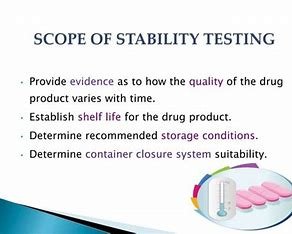Explore the objectives of stability data package guidelines for Active Pharmaceutical Ingredients (APIs) and Finished Pharmaceutical Products (FPPs). Learn about testing protocols, storage conditions, and stress testing standards.
These guidelines are intended to provide a detailed framework for the harmonization of stability data package required for the registration of Active Pharmaceutical Ingredients (APIs) and Finished Pharmaceutical Products (FPPs).
These guidelines supersede the former WHO guidance in this field. Although this document provides a set of recommendations as a default, other approaches are allowed if scientifically substantiated.
Further guidance can be found in the following ICH guidelines and WHO (world health organization) guidelines on multisource (generic) finished pharmaceutical products and provisions for active pharmaceutical ingredient master file procedure.
Scope of the Guidelines
These guidelines are relevant to both initial and subsequent APIs as the information needed is for the first and proposed further applications for marketing authorization of their respective human FPPs. Guidelines may be applicable to all stability testing for biologicals whereas, with unique product needs, the ICH has contained an increasing amount of information-specific to biological relics inguideline Q5C.
General Principles
Stability testing simply indicates the evidence of quality change of an API or FPP with respect to time under the effect of environmental factors such as temperature, humidity and light. Base stability testing program also include evaluation of product-related factors (excipients, container-closure system and packaging materials interactions). However, it needs to take the interaction of multiple APIs into account especially in case of fixed-dose combination FPPs.
Stability testing can also help establish a retest period for the API or a shelf-life for the FPP and recommend storage conditions. The guidelines states that an API is unstable when a major difference is found for the observed conditions.
Storage Conditions and Testing Frequency
These guidelines reflect the relevant data on climatic zones to clarify the various storage conditions, particularly long-term, intermediate and accelerated conditions. The schedule for testing is explicated which underlines the requirement for determination of stability profile of the API, particularly those with proposed retest period or shelf life of 12 months or longer.
Stress Testing
As such the guidelines recommend stress testing of the API to identify potential degradation products and then creating pathways of degradation. Stress test conditions are temperature, humidity, oxidation and photolysis. The aim is to find major degradation products without fully degrading the API.
Evaluation and Stability Commitments:
The stability data is statistically analyzed taking into consideration of any batch-to-batch variation. To enhance stability commitments, the guidelines clearly outline when these commitments will be needed or not and underline that stability studies should continue throughout drug development.
Conclusion
In summary, these guidelines describe general principles and procedures for stability testing of pharmaceutical substances (APIs) and FPPs to maintain their quality, safety and efficacy through the shelf life proposed by the manufacturer.
While providing a standardized approach, they provide the flexibility to accommodate case-specific scientific rationales and follows international guidelines (e.g., ICH).
Contact BioBoston Consulting and visit our website today to see how we can help.


